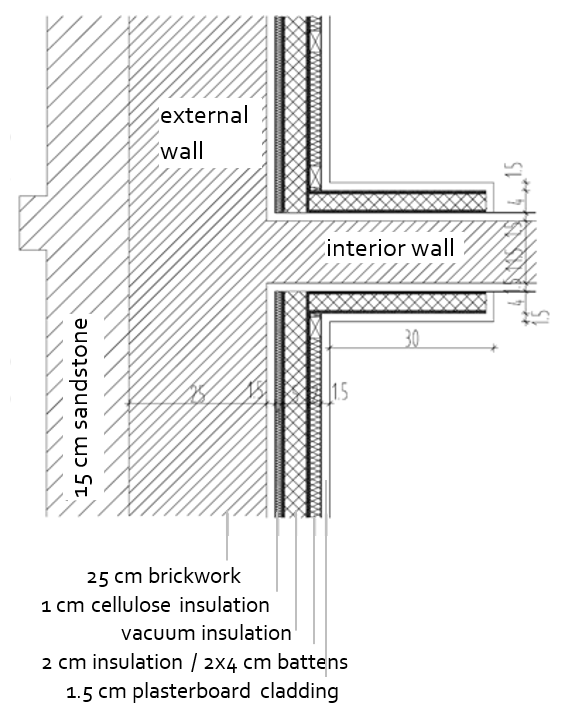01 02 03 04 05 06 07 08 09 10 11 12
Installation practice with interior insulation
Installation practice with interior insulation
Interior insulation is challenging in terms of the physics of buildings. Because, in contrast to external insulation, the external wall is not heated from the inside, the dewpoint is shifted further inwards and is now located between warm insulation layer and cold external wall. At this dewpoint there is a risk of moisture condensation and, as a consequence, mould developing. That is why, where interior insulation is employed, an experienced specialist should be consulted about the physics of the building.
What do the terms dewpoint and condensation mean?
Dewpoint is the term for a temperature threshold below which water vapour is precipitated (unchanged pressure assumed).
The term condensation is used if warm indoor air penetrates a building component during cold weather, it cools down on its way through the structure, and water vapour in the air can condense out as a liquid.
The first essential is to dimension the insulation etc. to be on the safe side in terms of physics, and a diffusion calculation should establish that it cannot lead to damage from moisture. Second, air flow around the insulation must not be possible; instead, the insulation materials must adhere to the entire surface of the external wall. Above all, joints between intersecting ceilings, interior walls etc. must be handled appropriately.
Connections must be planned in detail and implemented accurately! Wall connections and reinforced-concrete ceilings should be provided with flanking insulation, e.g., with insulation wedges, in order to reduce thermal bridges towards the external wall.

Interior insulation at junction of external and interior wall, with insulation strips or wedge along intersecting interior wall to reduce thermal-bridge effect (source: Schulze Darup, adapted)
With timber beam ceilings it is necessary to seal the beam ends within the insulation layer airtight, so as to avoid outward convection of moist air.
To cope with thermal bridges at the junction between interior insulation and basement ceiling, the basement ceiling receives additional insulation on top (instead of underneath – the usual arrangement), so that interior insulation and basement ceiling insulation form a continuous layer.
At windows, too, the interior insulation and the insulation of the window recess should form a continuous layer.
The airtight layer (plaster or vapour barrier) must be inside the interior insulation.
Basically, convection is the major cause of structural damage to interior insulation, because if warm, moist indoor air passes through the structure and cools down on the way out, water vapour condenses out. Another important aspect to consider is whether the structure is watertight to driving rain. If more moisture intrudes due to the weather, this will probably result in structural damage.
As an additional measure it may help to supply warmth to the room over the full length of the internal insulation, so that the temperature of vulnerable areas is raised somewhat. It always makes sense to combine interior insulation with fan-based ventilation systems; the constant supply of fresh air ensures that indoor air moisture is kept at a low level – a great advantage with respect to diffusion and convection.
Licensed under the Creative Commons Attribution Non-commercial No Derivatives License 4.0